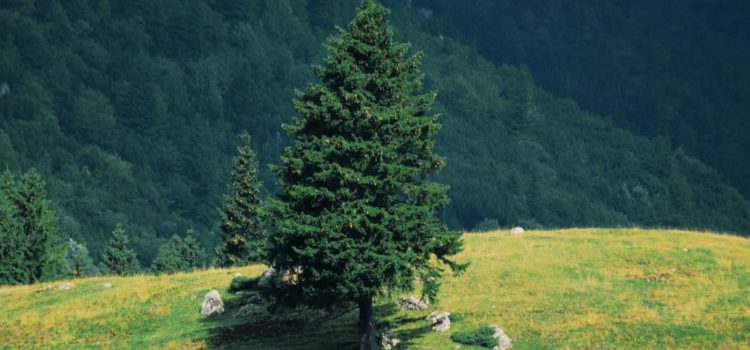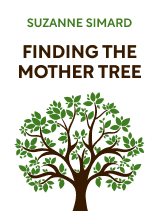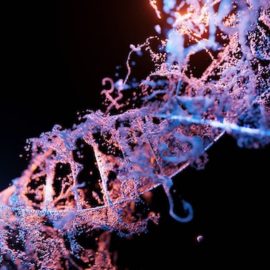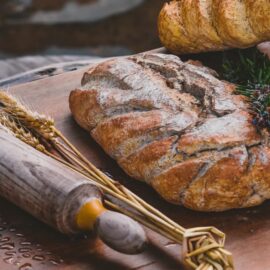

This article is an excerpt from the Shortform book guide to "Finding the Mother Tree" by Suzanne Simard. Shortform has the world's best summaries and analyses of books you should be reading.
Like this article? Sign up for a free trial here.
What do Douglas fir trees need to survive? How do birch trees help Douglas trees?
As part of her forest growth research, Suzanne Simard tested how birch trees and Douglas fir trees affected one another. She found that eliminating birch trees actually hurt Douglas trees.
Below we’ll look at Suzanne’s findings from her book Finding the Mother Tree.
Birch Contribute to Douglas Tree Health
One experiment Simard conducted with the Forest Service involved a project to eliminate birch trees, which were perceived as competitors of the more valued Douglas fir trees (better known as either “Douglas trees” or “fir”). Again, Simard set out to show that there was likely some cooperation involved between the species. Her experiment results showed cooperation in two forms:
- Birch facilitate the growth of a helpful bacteria that kill a fungal disease, which helps fir resist this disease.
- Birch contribute valuable carbon to fir.
Let’s look at the experiment to see how Simard reached these conclusions and how exactly that dynamic works between these two tree species.
The Experiment and Results
In this experiment, Simard created companion plots and clear-cut plots, in the same way she had with the alder and pine. In one plot, the birch trees were completely removed, leaving the fir trees to grow in a monoculture; in another, the two were left to grow alongside one another, as they would naturally. Again, she found that killing the “competitor” birch didn’t improve the growth of the cultivated Douglas trees, and in some cases it caused more of them to die—in this case, the results were a result of carbon trading.
Carbon trading: Carbon is an essential element of tree life, as trees convert it to sugars they need for energy. So Simard wanted to see if trees also share carbon with one another. During this experiment, she used chemistry techniques to measure relative amounts of carbon in the birch and fir trees across the growing season. She found that carbon was moving back and forth between the trees; the birch that were viewed as competitors of the fir were actually sharing carbon with them. And in fact, her measurements showed that the birch were giving more than the fir were giving back.
Simard expected to find this carbon sharing, but an unexpected finding was that the more shade the birch trees cast on the firs, the more carbon the birch donated. So, Simard says, the birch trees actually compensate the firs for the light they’re depriving them of.
Later tests showed the fir giving more carbon to the birch during spring and fall, while the birch gave more to the fir in summer, so she says this shows the two species have a long-term, seasonal relationship, an observation that again would have been missed with a short-term experimental design.
Fungal bacteria: Additionally, during this experiment, Simard observed that when birch trees were cut down to increase the growth of fir, the fir were more likely to get fungal disease and die. She found that birch facilitate the growth of helpful bacteria that kill fungal disease, so therefore birch trees were actually producing the remedy the firs needed for their root disease.
Two decades later, Simard returned to some of these experiment sites and found that in the longer term, firs that were planted together with birch were substantially healthier, with higher levels of nutrition and less disease. And the birch that had provided nutrients to the young firs were now being helped in return by the mature firs which had outgrown them.
Climate Change Affects Seasonal Cycles
Forest ecologists have noted recently that climate change is affecting cyclical seasonal patterns that are critical to plant life. Environmental conditions like light, temperature, and precipitation act as a “clock” that lets plants know when to do things like sprout new growth or drop seeds. These may also coincide with the seasonal activities of pollinators and foragers. When this clock gets disrupted, it can negatively affect the symbiotic relationships between plants, animals, and insects.
As Simard noticed that birch and Douglas trees share carbon, and alder and pine share water, in seasonal cyclical patterns, these climatic shifts could affect that cycle and have a devastating effect on the forests. This is an important reason to recognize these complex interdependencies.

———End of Preview———
Like what you just read? Read the rest of the world's best book summary and analysis of Suzanne Simard's "Finding the Mother Tree" at Shortform.
Here's what you'll find in our full Finding the Mother Tree summary:
- A look at Suzanne Simard's research on the relationships among trees
- What a Mother Tree is, and how it takes care of its community
- How trees communicate in an interconnected, underground network






